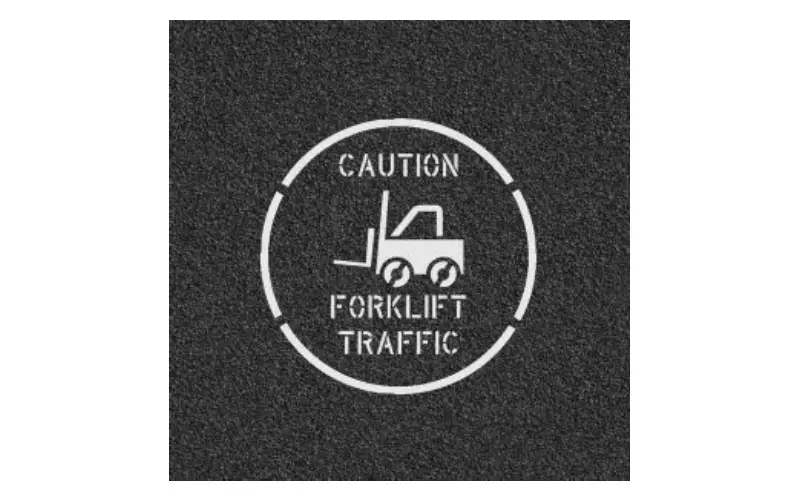Road Marking Stencils: Solutions for Safer and Smarter Roadways
Road marking stencils play a crucial role in ensuring safe and efficient transportation systems around the world. From highways to urban streets, these markings provide essential guidance for drivers, cyclists, and pedestrians, helping to reduce accidents and improve traffic flow. In this discussion, we delve into the multifaceted role of road marking stencils in creating safer and smarter roadways. By exploring various strategies, innovations, and applications, we aim to highlight the significance of road marking stencils in modern transportation infrastructure.
Improving Traffic Flow: Strategies With Road Marking Stencils
One of the primary objectives of road marking stencils is to enhance traffic flow and minimize congestion on roadways. Through strategic placement and design, these markings delineate lanes, indicate merging points, and guide drivers through intersections. By clearly defining traffic patterns, road marking stencils help to prevent accidents and promote smoother movement of vehicles. Additionally, advanced techniques such as dynamic lane markings and intelligent traffic systems further optimize traffic flow by adapting to changing conditions in real-time. Thus, road marking stencils serve as invaluable tools in the continuous effort to improve the efficiency of transportation networks.

Innovative Solutions: Road Marking Stencils For Smart Roadways
In recent years, technological advancements have led to the development of innovative road marking stencils that contribute to the creation of smart roadways. These modern solutions incorporate features such as retroreflectivity, luminescence, and even interactive elements to enhance visibility and functionality. For example, retroreflective road marking stencils utilize special materials that reflect light from vehicle headlights, improving visibility during nighttime driving. Luminescent markings, on the other hand, absorb and emit light, making them visible in low-light conditions. Furthermore, interactive road markings, equipped with sensors and LED displays, provide real-time information to drivers, alerting them to potential hazards or changes in road conditions. By embracing these technological innovations, road marking stencils play a vital role in the evolution of smart transportation systems.
Promoting Visibility: How Road Marking Stencils Ensure Safe Driving Conditions?
Visibility is paramount in maintaining safe driving conditions, especially in adverse weather or low-light environments. Road marking stencils are designed to maximize visibility by using high-contrast colors, reflective materials, and standardized symbols and patterns. These markings serve as visual cues for drivers, helping them to navigate the roadway with confidence. Additionally, road marking stencils are strategically placed at key locations such as crosswalks, pedestrian crossings, and bicycle lanes to improve visibility for non-motorized road users. By enhancing visibility and conspicuity, road marking stencils contribute to safer driving conditions for all road users, reducing the risk of accidents and improving overall road safety.
Efficiency And Precision: Road Marking Stencils In Modern Transportation
Efficiency and precision are essential aspects of modern transportation systems, and road marking stencils play a crucial role in achieving these objectives. By providing clear and standardized markings, road marking stencils help to minimize ambiguity and confusion for drivers, leading to smoother traffic flow and reduced travel times. Moreover, advancements in stencil design and application techniques have enabled greater precision in the placement of road markings, ensuring accuracy and consistency across roadways. From lane delineation to parking lot layout, road marking stencils contribute to the efficient use of road space and infrastructure, optimizing the overall transportation experience for commuters and travelers.
Maximizing Road Capacity: Benefits Of Road Marking Stencils
In densely populated urban areas and major transportation corridors, maximizing road capacity is essential to accommodate growing traffic demands. Road marking stencils play a crucial role in optimizing road capacity by facilitating efficient lane management and traffic flow. By clearly defining lanes, turn lanes, and merging points, road marking stencils enable the safe and orderly movement of vehicles, even during peak traffic periods. Additionally, innovative approaches such as high-occupancy vehicle (HOV) lanes and reversible lanes leverage road marking stencils to dynamically adjust lane configurations based on traffic conditions, further optimizing road capacity. As a result, road marking stencils contribute to reducing congestion and improving the overall efficiency of transportation networks.
From Concept To Application: Implementing Road Marking Stencils For Safer Roads
The successful implementation of road marking stencils requires careful planning, design, and execution to ensure optimal effectiveness and longevity. Road authorities and transportation agencies collaborate with engineers, designers, and road marking contractors to develop comprehensive marking plans tailored to specific roadway configurations and traffic conditions. Utilizing advanced technology such as computer-aided design (CAD) and geographic information systems (GIS), designers create precise layouts and specifications for road marking stencils, taking into account factors such as visibility, durability, and compliance with regulatory standards. During installation, experienced contractors use specialized equipment and materials to apply the markings with accuracy and consistency, following established guidelines and safety protocols.
Conclusion
Road marking stencils play a vital role in creating safer, smarter, and more efficient roadways by enhancing visibility, optimizing traffic flow, and maximizing road capacity. From delineating lanes and guiding drivers to promoting compliance with traffic regulations, these markings serve as essential tools in modern transportation infrastructure. As technology continues to evolve, road marking stencils will continue to adapt and innovate, contributing to the ongoing improvement of road safety and mobility. By prioritizing the implementation of road marking stencils and embracing technological advancements, communities can create transportation networks that are safer, more accessible, and more resilient for all road users.

Fran Peters is a dedicated writer specializing in health and medical content. With a background in healthcare and a passion for helping others lead healthier lives, Fran brings a wealth of knowledge and expertise to her writing.















Post Comment